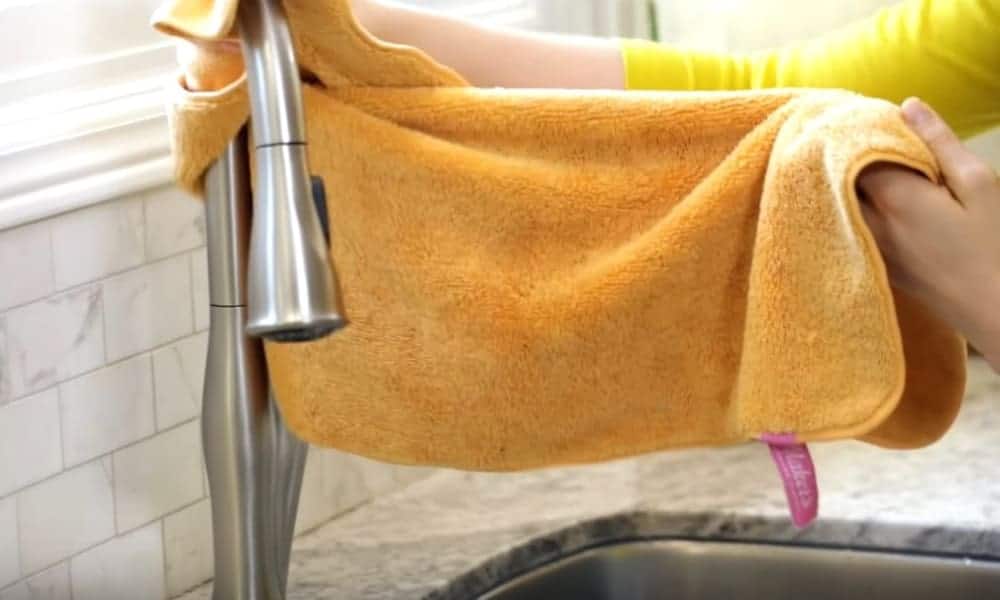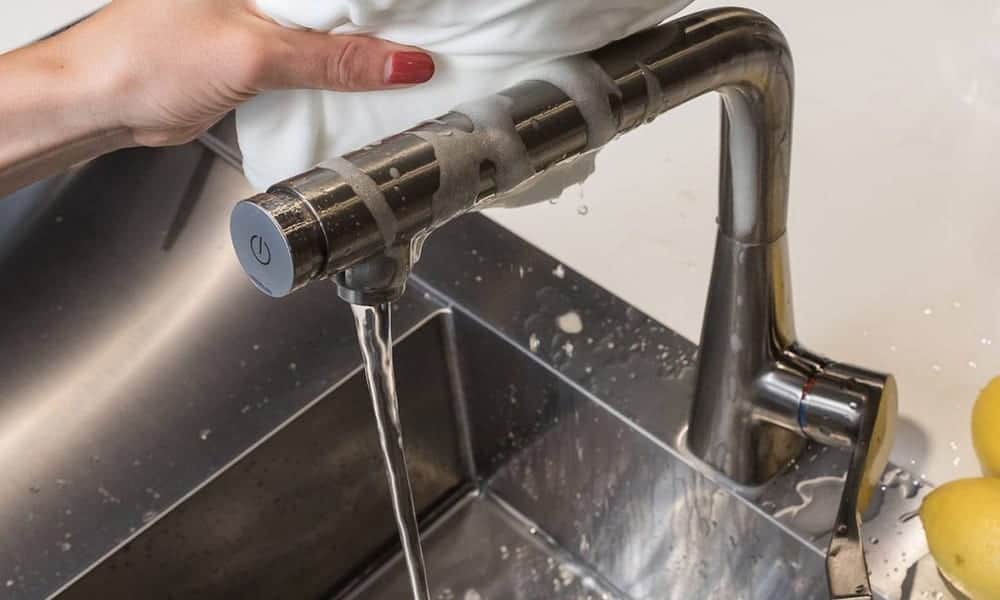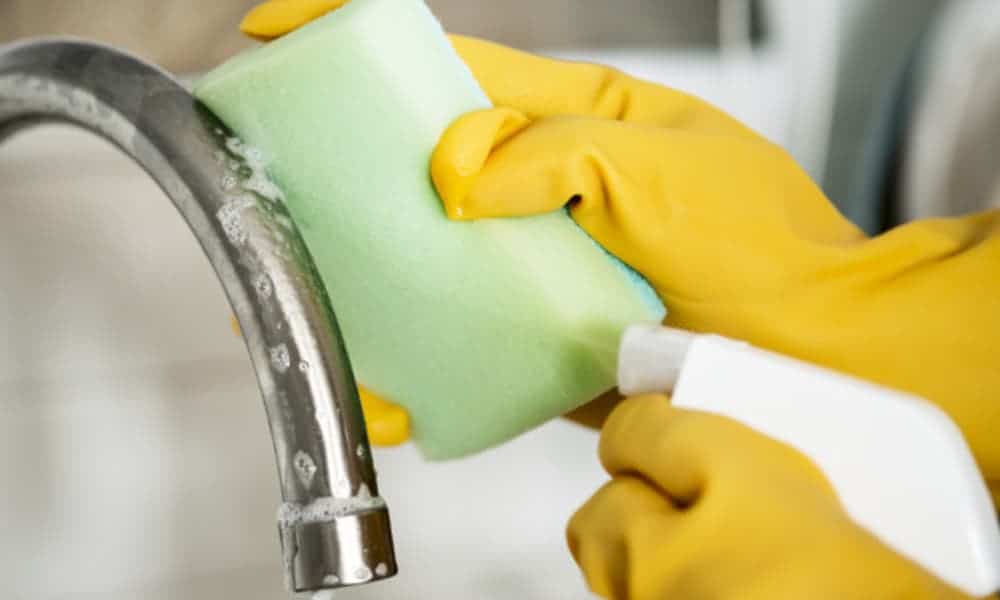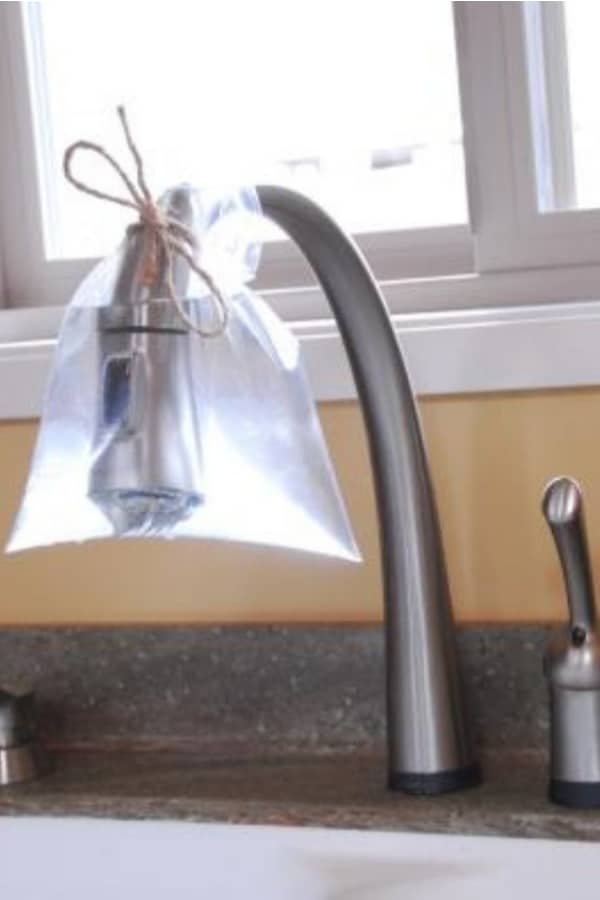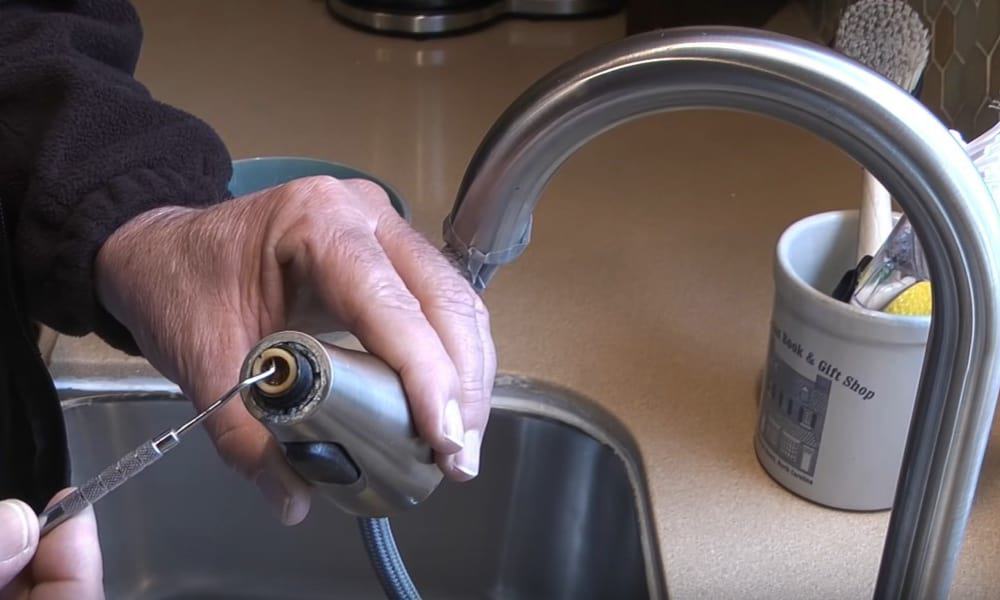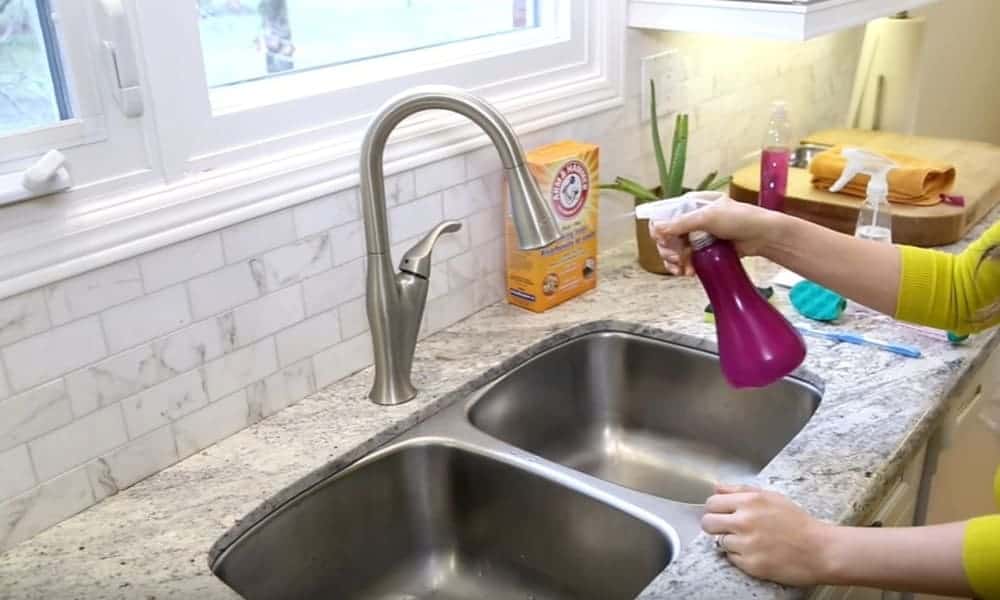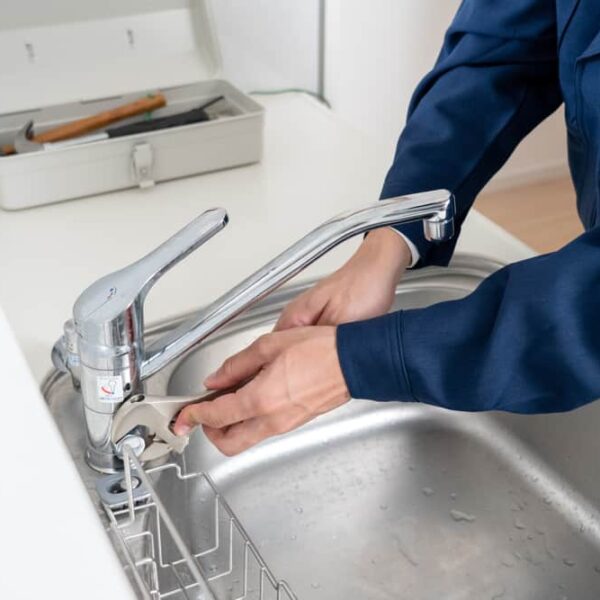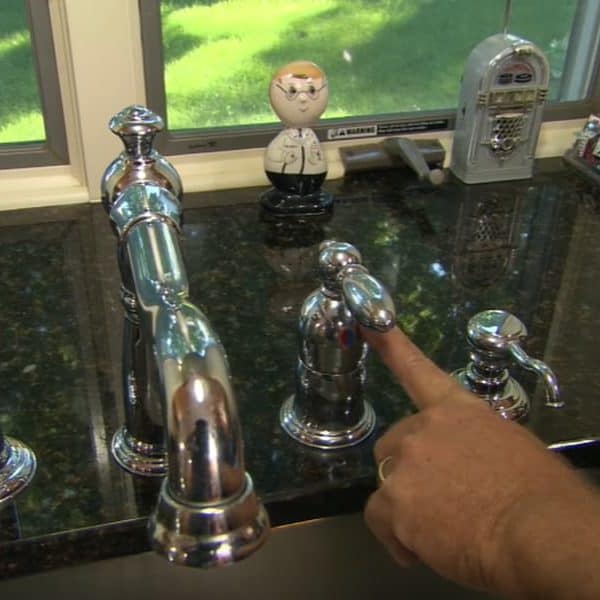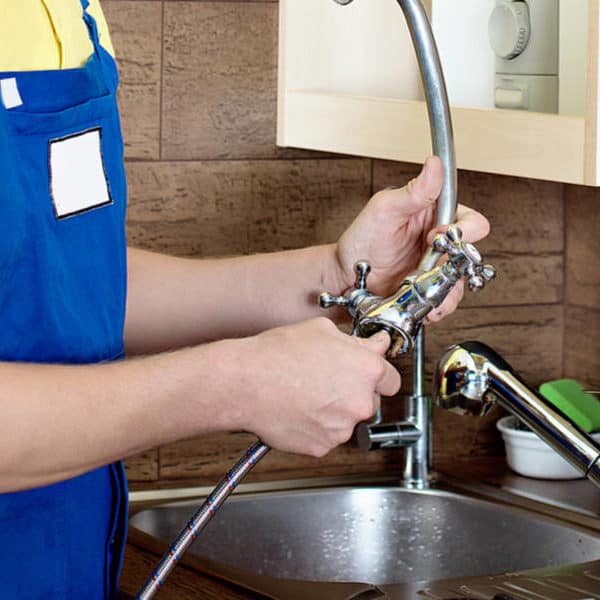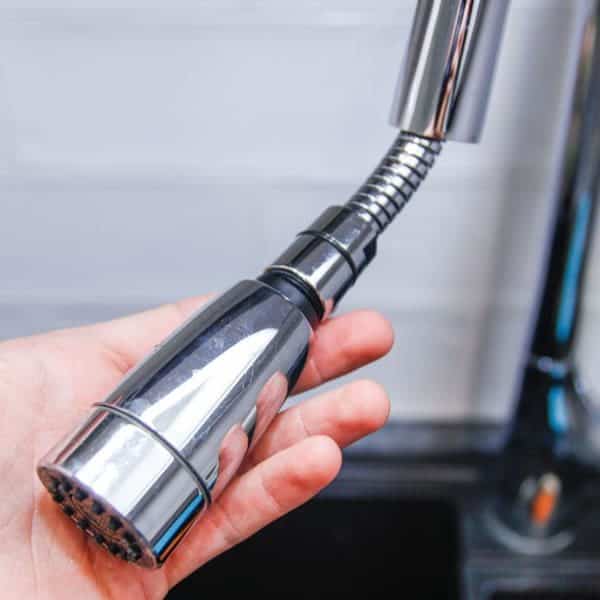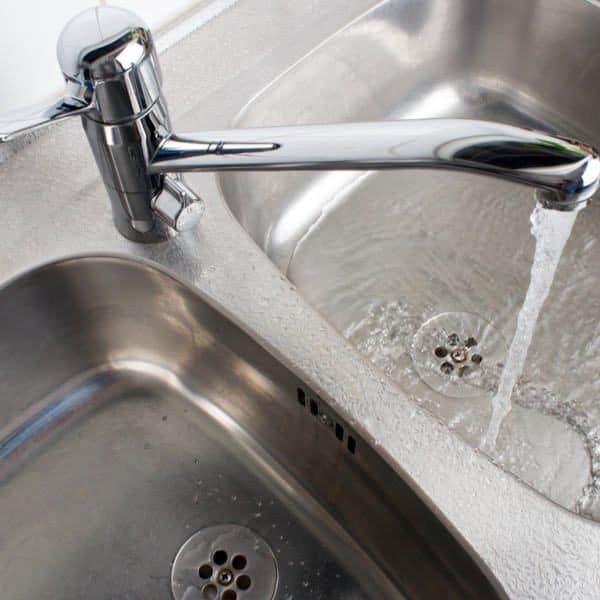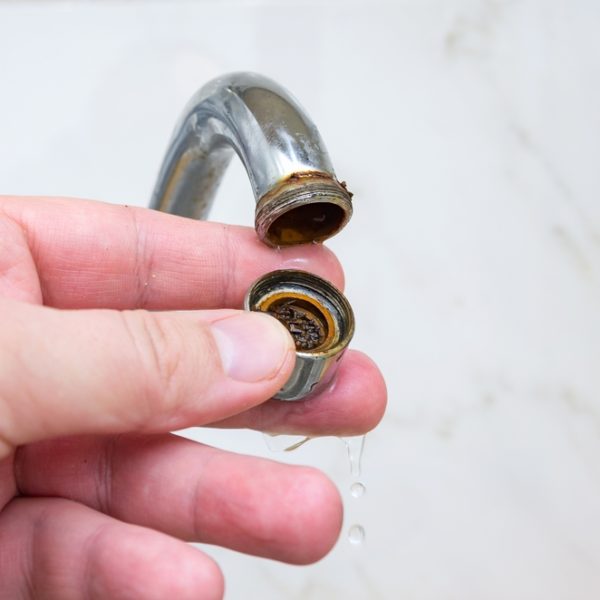Nobody likes household chores, but we have to do them so we might as well do them right. Cleaning a kitchen sink can be a pain, but much less if you know how to do it correctly. To help you with part of that, here’s our guide to how to clean a kitchen faucet.
For a preview of some of the stuff we’re going to talk about – plus some extra tips about cleaning kitchen sinks – check out this video before you read on.
Basic cleaning
For basic, everyday cleaning, all you need to do is wipe the faucet down with a wet cloth. After that, dry it off with a dry cloth – this will prevent marks appearing as the water dries.
This applies almost any type of kitchen faucet, including commercial faucets, or pull-out faucets, or touchless faucets and so on.
Alternatively, or for any more stubborn stains, you can use any regular gentle household cleaning product to clean your faucet. Again, simply apply with a cloth. Once you have wiped the faucet clean, wipe down with a dry cloth to prevent marks from appearing.
However, this will only be enough to keep your faucet looking clean. To ensure it is hygienically clean, you will need to do more.
Kitchen faucets provide a perfect breeding ground for germs and bacteria, so to clean it properly, you need to make sure you kill these, too.
One of the best ways to do this is to use vinegar – vinegar contains acetic acid, which is not only good getting rid of unpleasant odors and shifting stubborn stains but also does a good job of killing harmful bacteria. It’s natural, too, so it isn’t harmful to the environment.
To do this, mix up a solution of vinegar and water with a ratio of 1:1 and use this to wipe down your faucet with a cloth.
For something a bit more potent, you can use bleach instead. In this case, make sure you are wearing gloves when you use it.
How to Clean Kitchen Faucet Rust
If you have a build-up of a brown or reddish-brown deposit on your faucet, you are dealing with rust, and to shift rust, you will need to use acid.
Fortunately, there is a readily available source of environmentally-friendly acid that you can use for this purpose: lemon juice. Simply mix the lemon juice into a pasts with some borax and use it to wipe the rust off your faucet with a cloth.
How to Clean Kitchen Faucet Limescale
Green or green-blue deposits are due to limescale build-up. This is a particular problem in hard water areas.
To remove limescale deposits from your kitchen faucet, you will need to use ammonia.
To do it, prepare a solution of ammonia and water mixed in a 1:1 ratio and use it to wipe off the build-up. If the limescale is especially stubborn, apply the ammonia mixture to it and leave it to act for a while before wiping off.
When you have finished cleaning, make sure you wipe everything down well and run the water for a few minutes – traces of ammonia is not something you want in your drinking water.
How to Clean Kitchen Faucet Black or dark brown deposits
Black or dark brown deposits are likely to be due to a build-up of iron and manganese. These are two harmless minerals found in drinking water, but they look pretty disgusting on your fixtures and can also harbor harmful bacteria.
If you have this kind of build-up on your faucet, the solution is to use a mixture of cream of tartar – also known as tartaric acid – and hydrogen peroxide.
Mix them together to form a paste and then use a cloth to wipe the deposits clear.
Special pro tip for cleaning faucets
As we have said, faucets are a breeding ground for germs and bacteria, so it is imperative that we keep them hygienically clean.
Here’s another technique you can use to make sure no bacteria are present on your faucet while also preventing other deposits from taking hold at the same time.
For this trick, you will need a small plastic baggie, a rubber band and some vinegar.
Mix the vinegar with water in a 1:1 ratio and pour it into the baggie. With the rubber band, attach the baggie to the faucet so the head is submerged in the vinegar solution. Leave it to soak for half an hour – or even overnight – and then take it off, brush the faucet and rinse well.
If the water flow is impeded
If you have a mineral or other deposit inside your faucet, remove the faucet head by unscrewing it.
Take the faucet head apart, placing each piece side by side in order so you know how to put it back together again.
First, you can try scrubbing the inside of the filter with a toothbrush using a vinegar solution. If it is especially blocked, you can try to clear the individual holes with a needle.
Another trick you can try if it is blocked completely is to boil it for half an hour in vinegar. After half an hour, reassemble the faucet head, replace it on the faucet and see if the flow has improved.
Tips
Here are a couple of other tips related to cleaning kitchen faucets.
-
Avoid using scouring brushes or other abrasive brushes
If you use an abrasive brush to clean your faucet, you may leave permanent marks. Instead, use the correct cleaning products to remove stubborn stains.
-
Don’t use vinegar on iron
Using vinegar on iron fittings will damage them, so you should avoid it. If you don’t know if your fittings are made of iron, rub a small amount of vinegar on with a cloth and see if any comes off. If you see a stain on the cloth, don’t continue.
-
Be careful with the finish of your faucet
Most modern faucets have a chrome finish, and all the techniques we’ve mentioned here are suitable for chrome fittings. However, they may not be suitable for some other types, so if you don’t have chrome fittings, make sure you choose cleaning products that are suitable.
Keep on top of things to make it easier
Perhaps the key to cleaning a kitchen faucet is to do it often. That way, you can avoid any build-ups developing in the first place. This will mean it will be a much easier job for you to complete each time you need to do it.
